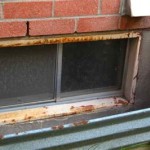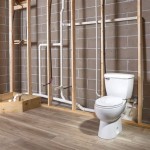Sump Pump Designs: Protecting Your Basement
Basements, valuable extensions of living space, are susceptible to water damage due to their location below ground level. Groundwater, rainwater runoff, and even plumbing leaks can lead to flooding, causing structural damage, mold growth, and property loss. A sump pump system provides a crucial defense against these threats, effectively removing excess water and keeping the basement dry.
Understanding sump pump designs and their components is vital for homeowners considering installation or seeking to optimize their existing system's performance. This article explores various sump pump designs, their functionalities, and key considerations for effective basement waterproofing.
Submersible Sump Pumps
Submersible sump pumps are designed to operate fully submerged within the sump pit. The motor is hermetically sealed to prevent water damage, ensuring reliable performance even under fully flooded conditions. This design offers quieter operation compared to pedestal pumps because the motor is enclosed within the pit. Submersible pumps are typically more powerful and efficient, making them suitable for basements prone to significant water infiltration. However, accessing the pump for maintenance or repairs can be more complex, requiring complete removal from the sump pit.
Pedestal Sump Pumps
Pedestal sump pumps feature a motor mounted on a pedestal above the sump pit, with the pump itself located at the bottom. This design allows for easier access to the motor for maintenance and repairs. Pedestal pumps are generally less expensive than submersible models. However, their exposed motor makes them more susceptible to damage from flooding and their operation is typically louder. They are generally less powerful than submersible pumps, making them more suitable for basements with less frequent or less severe water issues.
Water-Powered Backup Sump Pumps
While primary sump pumps rely on electricity, power outages can occur during heavy storms, precisely when sump pumps are most needed. Water-powered backup sump pumps provide a critical safety net in such situations. These pumps utilize the municipal water supply to create suction, effectively removing water even without electricity. They don't require batteries or fuel and offer a reliable backup solution. It's important to note that water-powered pumps consume a significant amount of water during operation, which can impact water bills during extensive use.
Sump Pit Design and Construction
The sump pit itself plays a crucial role in the overall effectiveness of the sump pump system. Typically constructed of concrete or heavy-duty plastic, the pit should be adequately sized to accommodate the pump and allow for efficient water collection. A properly installed sump pit should include a gravel base for drainage and a tightly sealed lid to prevent debris from entering and to minimize pump noise. The pit should also be located in the lowest point of the basement to effectively collect water from all directions.
Discharge Lines and Check Valves
The discharge line carries the pumped water away from the foundation, preventing its re-entry into the basement. Properly sized and installed discharge lines are essential for efficient water removal. A check valve, installed within the discharge line, prevents backflow of water into the sump pit when the pump cycles off. This is crucial for maintaining the system's efficiency and preventing the pump from cycling on and off unnecessarily.
Maintenance and Inspection
Regular maintenance is essential to ensure the long-term effectiveness of any sump pump system. Homeowners should inspect the pump periodically, checking for debris, clogs, and proper operation. Testing the pump by pouring water into the pit can confirm its functionality. Regularly cleaning the sump pit and removing any accumulated debris will further enhance the system's efficiency. Professional inspection and maintenance are recommended at least annually to identify potential issues and ensure optimal performance.
Battery Backup Systems
In addition to water-powered backup pumps, battery backup systems offer another layer of protection during power outages. These systems utilize a battery to power the sump pump when the primary power source fails. The battery is automatically recharged when power is restored. Battery backup systems offer a more efficient and cost-effective alternative to generators for maintaining sump pump operation during power outages.
Choosing the Right Sump Pump
Selecting the appropriate sump pump depends on several factors, including the basement's size, the severity of water infiltration, and the homeowner's budget. Consulting with a qualified plumbing professional can provide valuable insights and recommendations based on the specific needs of the property. Factors such as horsepower, pumping capacity, and features like automatic switches should be considered when choosing a sump pump.

Drainage Sump Pump Installation In The Chicagoland

Sump Pumps Pits In Connecticut Residential Resq

The Difference Between Sump Pits And Lift Stations Cape Coral Fort Myers Plumbing Air Conditioning Service Avis

Sumps And Sump Pumps Utilities Kingston

Choose The Best Sump Pumps For Your Home Interior Design News And Architecture Trends

Is Your Sump Pump Ready For Spring Valu Home Centers The Do It Yourselfer In You

A Guide To Proper Sump Dump Discharge Basement Defender

Sump Pits Introductory Guide Water Commander

Sump Pump Options Fine Homebuilding

Sump Pits Rapid Foundation Repair







